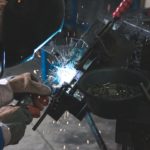 The potential use of AI in product development has a long history, whether through providing early diagnoses of potential faults or testing various product ideas. The latest example comes via research from Sandia National Laboratories, which demonstrates how machine learning can provide fast and cost-efficient means of testing bulk materials.
The potential use of AI in product development has a long history, whether through providing early diagnoses of potential faults or testing various product ideas. The latest example comes via research from Sandia National Laboratories, which demonstrates how machine learning can provide fast and cost-efficient means of testing bulk materials.
The researchers highlight the cost involved in stopping production, so manufacturers commonly screen materials to ensure that they won’t crack when manipulated into various parts. They explain that companies will often use simulation software to conduct mechanical tests, but these can take a number of months to complete. Faster simulations are possible, but require supercomputers to get the result time down to a few weeks.
Faster results
The research suggests that machine learning is capable of cutting this time down dramatically because the system doesn’t require information from any mechanical tests. It’s also capable of functioning without a supercomputer.
“You could efficiently use this algorithm to potentially find lighter materials with minimal resources without sacrificing safety or accuracy,” the authors explain.
The system works well because metal alloys consist of microscopic grains. These grains collectively form a texture that makes the metal stronger in certain directions than in others, which is a process known as mechanical anisotropy.
“We’ve trained the model to understand the relationship between crystallographic texture and anisotropic mechanical response,” the researchers explain. “You need an electron microscope to get the texture of a metal, but then you can drop that information into the algorithm, and it predicts the data you need for the simulation software without performing any mechanical tests.”
Put to the test
The system was trained on the results of around 54,000 simulated materials tests, with the algorithm then given 20,000 new microstructures to test in order to gauge its accuracy. The results were then compared with experiments and simulations conducted on the supercomputer.
“The developed algorithm is about 1,000 times faster compared to high-fidelity simulations. We are actively working on improving the model by incorporating advanced features to capture the evolution of the anisotropy since that is necessary to accurately predict the fracture limits of the material,” the researchers explain.
The technology will form part of the graphics-based and user-friendly Material Data Driven Design software that the researchers hope will bring it to a wider audience and allow other institutions to capitalize on it.